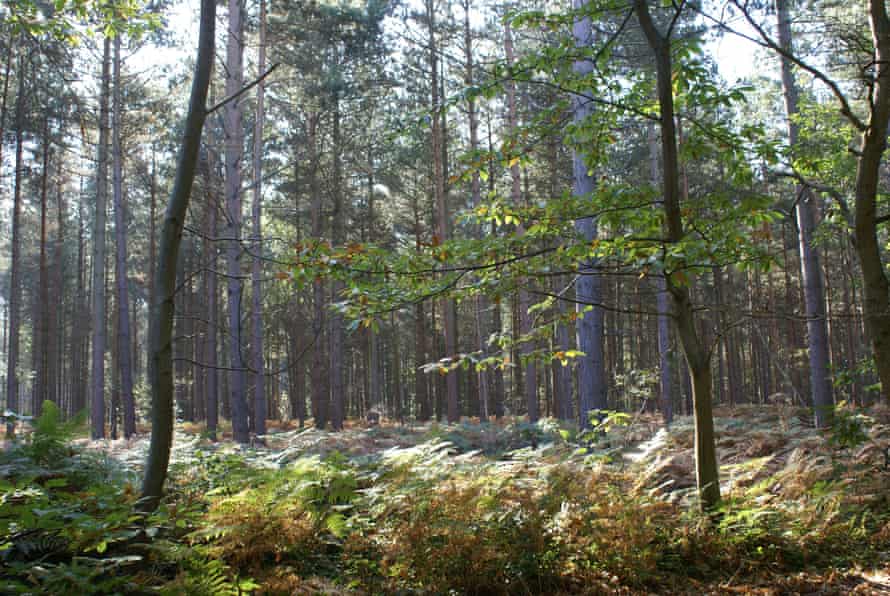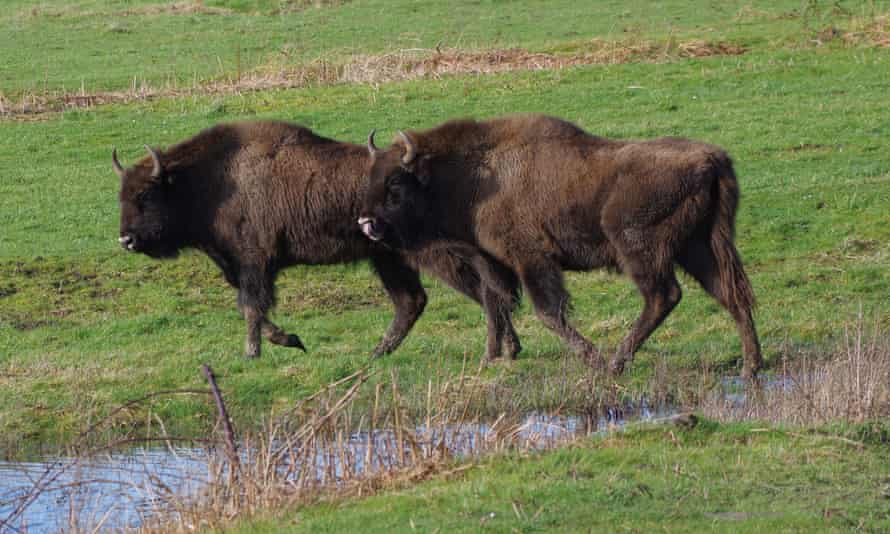Can you handle a beast as heavy as a small car, that can hurdle high fences from a standing start, and is a peaceful bulldozer for biodiversity?
If you’re not intimidated by the weightiest wild land mammal in Europe, you could become Britain’s first ever bison ranger.
Two people are being sought to manage a small herd of wild European bison (Bison bonasus) being introduced into Blean Woods, near Canterbury, to help restore the woodland for wildlife.
Kent Wildlife Trust and the Wildwood Trust hope that the bison, the closest living relative to the ancient steppe bison that once roamed Britain, will positively disrupt pine plantations within the ancient woodland for the benefit of other species.

Bison, which were hunted to extinction in Britain thousands of years ago, fell trees by rubbing up against them and eating the bark, creating areas of space and light in woods and providing dead wood which helps thousands of invertebrate species. They also create patches of bare earth by dust bathing, which can provide habitat for insects and lizards.
Blean Woods is one of the last strongholds for the heath fritillary butterfly, which has only survived because parts of the wood were regularly coppiced by people, providing light where the insect’s food plant could thrive.
Bison had been driven to extinction in Europe by 1927 and were only saved from complete obliteration by the existence of 54 of the mammals kept in zoos. In 1954 the first animals were returned to live freely in Białowieża Forest, Poland. There are now more than 1,000 bison in Białowieża and the species has been reintroduced to other European countries as part of restoration and rewilding projects.

The herd of four European bison will be introduced into a 200-hectare (500-acre) fenced enclosure in the woods, in the first case of the animals being brought to transform a nature reserve in the UK.
As part of the Wilder Blean project, funded with £1,125,000 raised by players of the People’s Postcode Lottery, two people are needed to help keep the bison in as wild a state as possible so that they can follow their natural behaviour patterns and consequently have the greatest positive impact on the environment.
Stan Smith, wilder landscapes manager at Kent Wildlife Trust, said: “This is a truly unique role for the UK. It’s a chance to manage a free-roaming herd of Europe’s largest living land mammal and to develop an entirely new skill set which will enable the success of this and future wilding projects.
“This is a first step to European bison becoming more frequent tools for the restoration of ecosystems in Britain and for two [people] to get to know these animals like no other.”
The project organisers said that no significant experience with bison was required for the ranger posts but candidates would need ecological knowledge, understanding of animal behaviour, and a passion to tell others about the creatures. The bison are set to arrive in the spring of 2022.
The bison rangers will be responsible for licences, health checks, safety, maintaining fences and gates, and planning and monitoring how visitors interact with the bison. Training for the role will include time at several Dutch nature reserves with bison to increase understanding of the management of the free-ranging animals.
Mark Habben, head of living collections at the Wildwood Trust, said it would be “the job of a lifetime” for two people who were passionate about conservation and nature.
“European bison are a fascinating, important, species in the UK, and we look forward to the positive impact that they will have when inhabiting Blean Woods,” he said.
Source link



